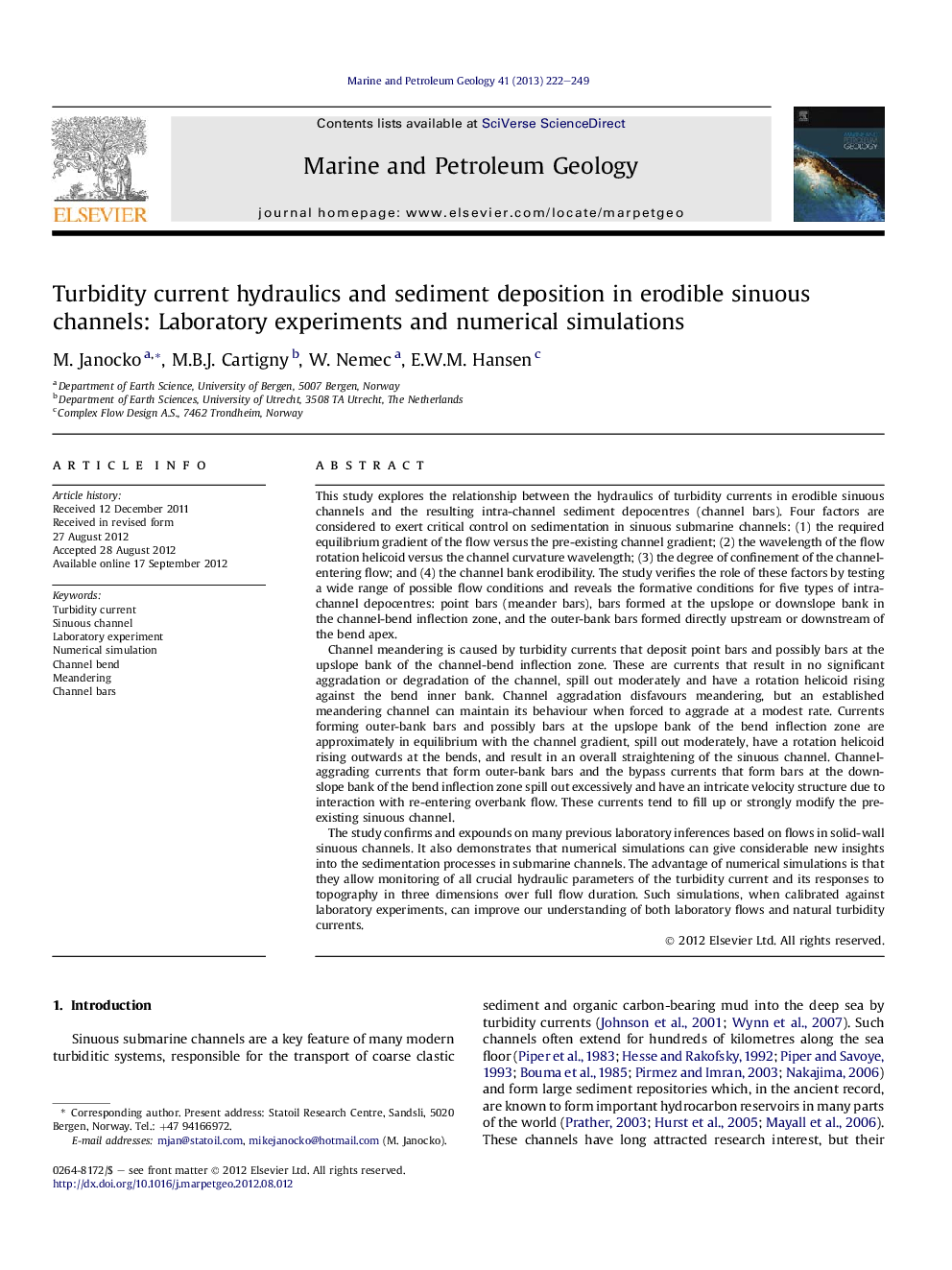| کد مقاله | کد نشریه | سال انتشار | مقاله انگلیسی | نسخه تمام متن |
|---|---|---|---|---|
| 4695779 | 1637183 | 2013 | 28 صفحه PDF | دانلود رایگان |
This study explores the relationship between the hydraulics of turbidity currents in erodible sinuous channels and the resulting intra-channel sediment depocentres (channel bars). Four factors are considered to exert critical control on sedimentation in sinuous submarine channels: (1) the required equilibrium gradient of the flow versus the pre-existing channel gradient; (2) the wavelength of the flow rotation helicoid versus the channel curvature wavelength; (3) the degree of confinement of the channel-entering flow; and (4) the channel bank erodibility. The study verifies the role of these factors by testing a wide range of possible flow conditions and reveals the formative conditions for five types of intra-channel depocentres: point bars (meander bars), bars formed at the upslope or downslope bank in the channel-bend inflection zone, and the outer-bank bars formed directly upstream or downstream of the bend apex.Channel meandering is caused by turbidity currents that deposit point bars and possibly bars at the upslope bank of the channel-bend inflection zone. These are currents that result in no significant aggradation or degradation of the channel, spill out moderately and have a rotation helicoid rising against the bend inner bank. Channel aggradation disfavours meandering, but an established meandering channel can maintain its behaviour when forced to aggrade at a modest rate. Currents forming outer-bank bars and possibly bars at the upslope bank of the bend inflection zone are approximately in equilibrium with the channel gradient, spill out moderately, have a rotation helicoid rising outwards at the bends, and result in an overall straightening of the sinuous channel. Channel-aggrading currents that form outer-bank bars and the bypass currents that form bars at the downslope bank of the bend inflection zone spill out excessively and have an intricate velocity structure due to interaction with re-entering overbank flow. These currents tend to fill up or strongly modify the pre-existing sinuous channel.The study confirms and expounds on many previous laboratory inferences based on flows in solid-wall sinuous channels. It also demonstrates that numerical simulations can give considerable new insights into the sedimentation processes in submarine channels. The advantage of numerical simulations is that they allow monitoring of all crucial hydraulic parameters of the turbidity current and its responses to topography in three dimensions over full flow duration. Such simulations, when calibrated against laboratory experiments, can improve our understanding of both laboratory flows and natural turbidity currents.
► Four critical factors governing architectural development of channels are established.
► Five channel bar types are recognized and their formation is described in detail.
► Turbidity currents that form point bars result in channel meandering.
► Turbidity currents that form outer-bank deposits may result in channel straightening.
► Other turbidity currents may lead to abandonment or major restructuring of channels.
Journal: Marine and Petroleum Geology - Volume 41, March 2013, Pages 222–249
